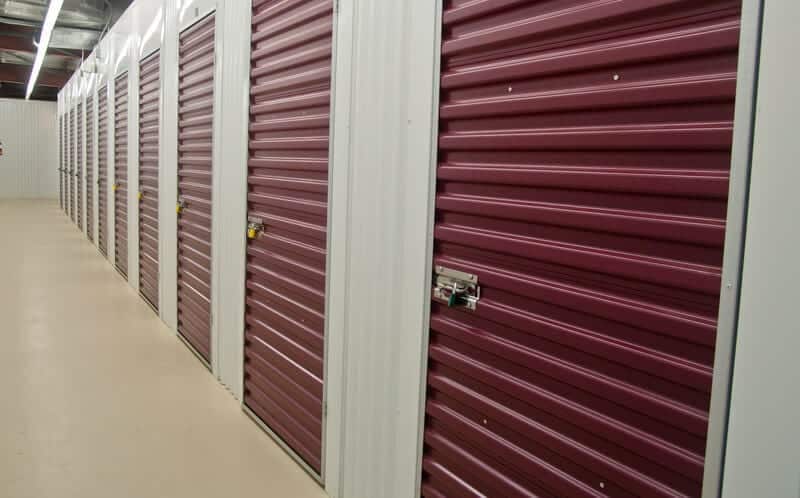
Prefer not to leave your phone number?
No problem!
Schedule an Appointment at your Convenience
(Only email is required)
Schedule an AppointmentOr Call Now
844-545-1881By: Last Updated: Feb 04, 2025
Ready to stash your stuff but not sure where to start? We provide you with the exact answers you’ve been searching for below.

Yep, we all have stuff. It’s everywhere. But sometimes, there’s just too much of it squeezing into too little space. That’s where storage units come into play.
Here’s the million-dollar question though: How much does a storage unit actually cost?
Don’t worry we’re here to uncover the true costs behind storage units to ensure you’re getting the best bang for your buck. Time to dive into the world of storage solutions.
There’s more to the cost of a storage unit than just slapping down a monthly payment. Let’s see what can influence the price tag of your storage unit:
Think of storage units like holiday decorations, meaning they’re way cheaper when demand is less. During the colder months, fewer people are moving or decluttering.
This is your golden opportunity. Storage companies often drop prices and release promotions to attract new people like you. So bundle up and snag a deal when winter rolls around.
Location can affect storage unit prices because of higher property costs and greater demand in urban areas. Space is a premium commodity there, but if you venture out to the rural side, you’ll find lower prices.
Smaller units are more affordable than large ones. For example, the average small storage unit costs only $70, while the bigger units cost upwards of $300 per month.
The length of time you plan to use a storage unit can affect the overall cost. Some storage facilities require a minimum period, such as three months, while others may offer discounts for long-term storage. Short-term rentals usually come at a premium compared to long-term rentals.
Most storage places insist you have insurance to cover whatever you stash. The cost hinges on how much stuff you’ve got and its total value.
You can either add it to your monthly bill or get an independent plan. Your homeowner’s or renter’s insurance might just cover this so check that too!
If disaster strikes you’ll want the best coverage possible, so choose a policy that won’t leave you and your belongings high and dry.
The tax rate depends on your area, but keep an eye out for extra fees. Some companies might tack on extra for things like administrative setup or the convenience of auto payments.
These additional fees might not always show up in online quotes, so factor them into your budget to avoid surprises. Lastly, always pay on time.
These units are the most affordable and can range from $50 to $150 per month. Outdoor storage is essentially extra garage space. These units are located outdoors in a gated area at ground level for easy drive-up access.
Each outdoor unit is locked but exposed to the outside weather. They are more affordable, have drive-up access, and have fewer limitations on size. Some recommended items to put in these storage units are tools,l outdoor furniture, and sporting equipment.
These units cost between $75 to $200 per month. Indoor units are located inside a single or multi-story building. These buildings provide two layers of protection for customers. One against the weather and the other against unwanted visitors.
Choose an indoor storage facility for your most sensitive belongings so that they can remain safe and secure. Some recommended items to put in these units are furniture, electronics and appliances, and artwork.
These are the most luxurious of units – essentially “first class” for your belongings. These can range from $100 to $300 per month and are ideal for storing delicate items, like artwork or technology. For areas with harsh winter, heated storage is also an option.
| Storage Unit Type | Size | Average Cost |
|---|---|---|
| Outdoor | 5×5 | $50 – $75 |
| 5×10 | $75 – $125 | |
| 10×10 | $100 – $150 | |
| 10×15 | $150 – $200 | |
| 10×20 | $200 – $250 | |
| Indoor | 5×5 | $75 – $100 |
| 5×10 | $100 – $175 | |
| 10×10 | $125 – $200 | |
| 10×15 | $175 – $225 | |
| 10×20 | $225 – $275 | |
| Climate-Controlled | 5×5 | $100 – $125 |
| 5×10 | $125 – $200 | |
| 10×10 | $150 – $250 | |
| 10×15 | $200 – $275 | |
| 10×20 | $250 – $300 |
*Include this graphic in this article (just a screenshot don’t have the whole table)
Do you need your storage unit to be close to your current home?
How much stuff will you be storing? And for how long?
These are some of the questions that need to be answered when moving your items to a storage unit. You should consider your own needs and decide on which storage unit type fits your situation the best.
It depends on what kind of storage and the size of the unit you’re looking for. Self-storage facilities cost, on average across the U.S., $122 per month for a 10×10 unit as of December 2023.
Low-cost storage units may seem like a good deal, but do your homework because the hidden expenses can add up. Portable storage containers, by comparison, can range from about $180-$300, with the added benefit of storage wherever you need it, including in your driveway.
When it comes to storage unit size, most Americans tend to go middle of the road, opting for a 10×10 foot storage unit more than any other size. This offers a comfortable 100 square feet of storage space, which is enough to house items from a two-bedroom home.
A 10×10 storage unit is usually enough for three rooms — a living room and two bedrooms, for example. A 10×10 storage unit is also comparable to a 12-foot PODS moving and storage container.
So, are you ready to turn your mess into an organized one? Navigating storage units is a bit like finding the perfect parking spot in a crowded lot. It takes some circling, but once you spot the right one, it’s a game changer. From researching seasonal deals to choosing just the right size, you’re now equipped to make the most financially savvy choices for your storage needs.
Remember, the right unit isn’t just about space; it’s about making your life a little easier and keeping your valuables safe, without draining your wallet.